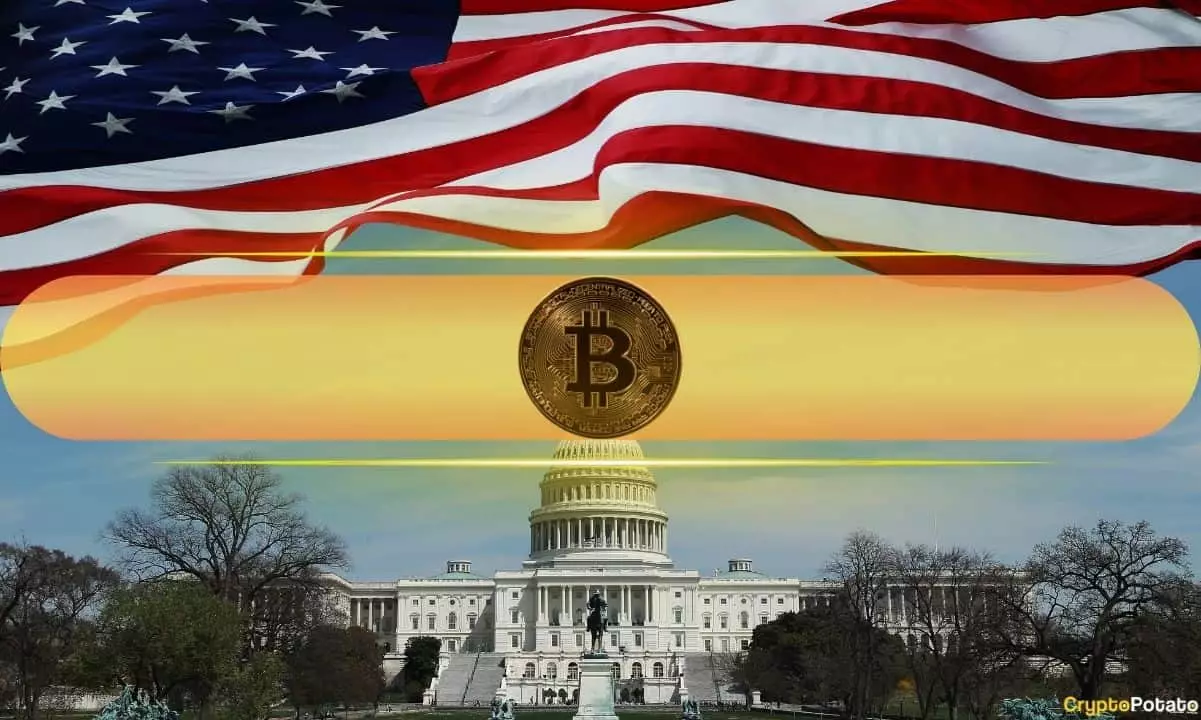In an era where financial innovation is redefining economic landscapes, the Trump administration’s potential initiative to establish a U.S. Bitcoin Reserve stands out as an audacious step. This consideration, highlighted by Bo Hines, the Executive Director of the President’s Council of Advisers on Digital Assets, proposes the use of alternative government funding streams. The exploration of tariff revenues and reassessing gold reserves isn’t merely a financial strategy—it’s a declaration that the United States is ready to sit at the table of cryptocurrency pioneers.
In this context, Hines remarked on the multiplicity of creative funding methods for Bitcoin acquisitions. Why not leverage tariffs? By tapping into these existing streams of revenue instead of drawing from conventional budget allocations, the administration could bolster the country’s financial stature without burdening taxpayers. This tactic could serve as a critical pivot away from outdated fiscal practices propagated by previous administrations that often relied on opaque funding mechanisms.
The Legislative Framework Driving Change
One of the standout proposals emerging from this initiative is the Bitcoin Act of 2025, led by Senator Cynthia Lummis. This potential legislation suggests that the U.S. Treasury could readjust gold certificate valuations—a bold maneuver that could change how we perceive the nation’s wealth. Currently valued at $43 per ounce, a revision could reestablish this figure around $3,200, opening up a floodgate for funds that can be funneled into Bitcoin without divesting any physical gold reserves.
This proposal highlights an urgent need to align traditional assets with contemporary market realities. By recalibrating the historical price of gold, the administration could responsibly amass Bitcoin while modernizing our asset classification systems. This shift may spark debates on fiscal conservatism and innovation, pushing Congress to reckon with the prevailing trends of economic digitalization.
The Interagency Collaboration Model
To solidify this effort, Hines noted that several federal agencies are collaborating through a dedicated interagency working group. This behind-the-scenes collective is designed to unify various governmental perspectives and ensure a comprehensive and coherent approach. Such collaboration is essential for addressing complex regulatory landscapes and ensuring that the U.S. emerges as a leader in cryptocurrency governance.
However, this brings up a pivotal concern: the sluggish pace of bureaucracy. While interagency cooperation can lead to a well-rounded policy, excessive deliberation could hinder timely action. The rapidly evolving nature of digital assets demands a proactive response, and any hesitation could allow other nations to outpace the U.S. in becoming the next crypto superpower.
Funding Mechanisms Without Taxpayer Burden
An intriguing aspect of the administration’s approach is the focus on non-taxpayer burdens in funding the Strategic Bitcoin Reserve. Initial funding via Bitcoin seized during criminal investigations exemplifies a creative, albeit controversial strategy. Utilizing assets acquired through legal actions simultaneously sidesteps direct taxation while fortifying the nation’s digital currency tally. Nonetheless, the ethical implications of this strategy deserve scrutiny. Can we ethically fund innovation through assets that are inherently tied to criminality?
Furthermore, suggestions of internal portfolio rebalancing as budget-neutral methods to expand reserves are compelling, but they necessitate rigorous scrutiny to ensure that they do not lead to unintended consequences. Carefully managed, these strategies could position the U.S. not just as a supporter of cryptocurrency but as its foremost advocate.
America’s Crypto Ambitions
The White House’s ambition to establish America as the “crypto capital of the world” is not merely a slogan; it encompasses a broader recognition of the potential within blockchain and digital asset technology. Hines’ strong endorsement of these emerging financial systems underscores a philosophical shift toward modernization and transparency—a response to the shortcomings of traditional banking systems marred by inefficiencies, hidden fees, and opacity.
Imagine a landscape where transactions are seamless, secure, and devoid of the traditional financial system’s baggage. In an era where transparency is becoming increasingly vital for economic trust, adopting digital assets can invigorate public confidence.
As the administration stands at the precipice of potentially transformative economic policies, the discourse surrounding a U.S. Bitcoin Reserve hints at a fascinating confluence of innovation, ethics, and strategic financial positioning. The questions it raises are crucial: Can America navigate these waters effectively? Do we have the resolve to embrace new economic paradigms? It remains to be seen, but the potential is undeniably electrifying.

